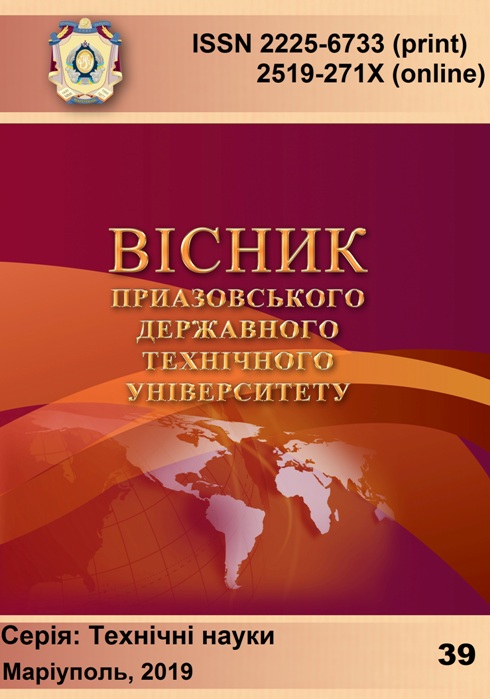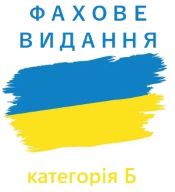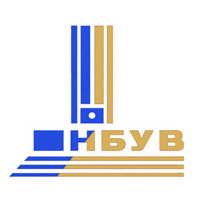Моделювання системи живлення електротехнічного комплексу машини контактного зварювання
DOI:
https://doi.org/10.31498/2225-6733.39.2019.201068Ключові слова:
машина контактного зварювання, джерело живлення, енергія, коливання напруги, зміна опору, тривалість зварюванняАнотація
У статті досліджена робота електротехнічного комплексу машини контактного зварювання з тиристорним регулюванням струму. Модель процесу контактного зварювання представлена у вигляді об’єкту керування з відомими вхідними параметрами, вихідними параметрами та зовнішніми збуреннями. Проаналізовано вплив збурюючих факторів на процес зварювання та підтверджено, що для забезпечення якісного зварного з’єднання необхідно стабілізувати енергію, що виділяється у зварювальному контакті. Розроблено модель, яка імітує зміну опору зварювального кола впродовж зварювального циклу. Розроблено модель підсистеми стабілізації енергії, що обчислює енергію, яка виділяється в зварювальному контакті, та при досягненні нею заданого значення відключає машину. Для розрахунку необхідної енергії використане рівняння теплового балансу, що враховує як корисну енергію, що витрачається на створення зварного з’єднання, так і втрати енергії на тепловідвід у електроди, у деталі, що зварюються, та конвективний теплообмін (яким зазвичай нехтують). Отримані результати розрахунку корисної енергії враховують приховану теплоту плавлення. В результаті імітаційного моделювання показано, що забезпечення виділення необхідної кількості енергії призводить до збільшення тривалості зварювання: при врахуванні зміни опору під час зварювання – до 20%, при врахуванні коливань напруги (-15%) – до 30%. При дії обох збурюючих факторів тривалість зварювання може в межі зростати до 60% за умови забезпечення необхідної якості зварювання. Таким чином, показано, що окрім величини зварювального струму можна регулювати тривалість зварювання, забезпечуючи потрібну енергію у зварювальному контакті (з урахуванням обмежень на тривалість струму)Посилання
Перелік використаних джерел (ДСТУ):
Resistance Welding Machine Market 2019 Industry Research, Share, Trend, Global Industry Size, Price, Future Analysis, Regional Outlook to 2024 Research Report [Електронний ресурс]. – Режим доступу : www.marketwatch.com/press-release/resistance-welding-machine-market-2019-industry-research-share-trend-global-industry-size-price-future-analysis-regional-outlook-to-2024-research-report-2019-05-20.
Вагин Г.Я. Режимы электросварочных машин / Г.Я. Вагин. – 2-е изд., перераб. и доп. – М. : Энергоатомиздат, 1985. – 192 с.
Климов А.С. Контактная сварка. Вопросы управления и повышения стабильности каче-ства / А.С. Климов. – М. : ФИЗМАТЛИТ, 2011. – 216 с.
Моделювання електромеханічних систем : підручник / О.П. Чорний, Д.Й. Родькін, А.В. Луговой, Г.Ю. Сисюк, А.В. Садовой. – Кременчук, 2001. – 374 с.
Островерхов М.Я. Системи і методи ідентифікації електротехнічних об’єктів : монографія / М.Я. Островерхов, А.М. Сільвестров, О.М. Скринник ; Нац. авіац. ун-т. – Київ : НАУ, 2016. – 323 с.
Kimchi M. Resistance Spot Welding: Fundamentals and Applications for the Automotive Industry / M. Kimchi, D.H. Phillips // Synthesis Lectures on Mechanical Engineering. – 2017. – Vol. 1, № 2. – 115 p. – Mode of access: DOI: 10.2200/S00792ED1V01Y201707MEC005.
Катаев Р.Ф. Теория и технология контактной сварки : учебное пособие / Р.Ф. Катаев, В.С. Милютин, М.Г. Близник. – Екатеринбург : Изд-во Урал. ун-та, 2015. – 144 с.
Поляков А.Ю. Снижение энергоемкости процессов контактной рельефной сварки : монография / А.Ю. Поляков. – Могилёв : Белорус.-Рос. ун-т, 2019. – 209 с.
Поднебенная С.К. Автоматизированная система управления источником питания ма-шины контактной сварки / С.К. Поднебенная, В.В. Бурлака, С.В. Гулаков // Вісник Приазовського державного технічного університету : Зб. наук. пр. / ДВНЗ «ПДТУ». – Маріуполь, 2016. – Вип. 33. – С. 131-141. – (Серія : Технічні науки).
Поднебенная С.К. К вопросу повышения коэффициента мощности однофазных источ-ников питания машин контактной сварки / С.К. Поднебенная, В.В. Бурлака, С.В. Гулаков // Праці Інституту електродинаміки Національної академії наук України. – К. : ІЕД НАНУ, 2017. – Вип. 46. – С. 126-133. – Mode of access: DOI: 10.15407/publishing2017.46.126.
References:
Resistance Welding Machine Market 2019 Industry Research, Share, Trend, Global Industry Size, Price, Future Analysis, Regional Outlook to 2024 Research Report Available at: www.marketwatch.com/press-release/resistance-welding-machine-market-2019-industry-research-share-trend-global-industry-size-price-future-analysis-regional-outlook-to-2024-research-report-2019-05-20 (accessed 15 September 2019).
Vagin G.Ia. Rezhimy elektrosvarochnykh mashin [Modes of electric welding machines]. Moscow, Energoatomizdat Publ., 1985. 192 p. (Rus.)
Klimov A.S. Kontaktnaia svarka. Voprosy upravleniia i povysheniia stabil’nosti kachestva [Contact welding. Management issues and improving quality stability]. Moscow, FIZMATLIT Publ., 2011. 216 p. (Rus.)
Chornii O.P., Rod’kіn D.I., Lugovoi A.V., Sisiuk G.Iu., Sadovoi A.V. Modeliuvannia elektromekhanіchnikh sistem: pіdruchnik [Modeling of electromechanical printing systems: textbook]. Kremenchuk, 2001. 374 p. (Ukr.)
Ostroverkhov M.Ia., Sіl’vestrov A.M., Skrinnik O.M. Sistemi і metodi іdentifіkatsії elektrotekhnіchnikh ob’єktіv : monografіia [Systems and methods for identifying electrical engineering objects : monograph]. Kiїv, NAU Publ., 2016. 323 p. (Ukr.)
Kimchi M., Phillips D.H. Resistance Spot Welding: Fundamentals and Applications for the Automotive Industry. Synthesis Lectures on Mechanical Engineering, 2017, vol. 1, no. 2. 115 p. doi: 10.2200/S00792ED1V01Y201707MEC005.
Kataev R.F., Miliutin V.S., Bliznik M.G. Teoriia i tekhnologiia kontaktnoi svarki: uchebnoe posobie [Theory and technology of resistance welding: a training manual]. Ekaterinburg, Izd-vo Ural. un-ta Publ., 2015. 144 p. (Rus.)
Poliakov A.Iu. Snizhenie energoemkosti protsessov kontaktnoi rel’efnoi svarki: monografiia [Reducing the energy intensity of contact relief welding processes: monograph]. Mogilev, 2019. 209 p.
Podnebennaia S.K., Burlaka V.V., Gulakov S.V. Avtomatizirovannaia sistema upravleniia istochnikom pitaniia mashiny kontaktnoi svarki [Automatic Control System of Power Supply for Resistance Welding Machine]. Vіsnik Priazovs’kogo derzhavnogo tekhnіchnogo unіversitetu. Serіia: Tekhnіchnі nauki – Reporter of the Priazovskyi State Technical University. Section: Technical sciences, 2016, vol. 33, pp. 131-141. (Rus.)
Podnebennaia S.K., Burlaka V.V., Gulakov S.V. K voprosu povysheniia koeffitsienta moshchnosti odnofaznykh istochnikov pitaniia mashin kontaktnoi svarki [On the issue of increasing the power factor of single-phase power sources of resistance welding machines]. Pratsi Instytutu Electrodynamiky NAN Ukrainy, 2017, vol. 46, pp. 126-133. doi: 10.15407/publishing2017.46.126. (Rus.)
##submission.downloads##
Як цитувати
Номер
Розділ
Ліцензія
Журнал "Вісник Приазовського державного технічного університету. Серія: Технічні науки" видається під ліцензією СС-BY (Ліцензія «Із зазначенням авторства»).
Дана ліцензія дозволяє поширювати, редагувати, поправляти і брати твір за основу для похідних навіть на комерційній основі із зазначенням авторства. Це найзручніша з усіх пропонованих ліцензій. Рекомендується для максимального поширення і використання неліцензійних матеріалів.
Автори, які публікуються в цьому журналі, погоджуються з наступними умовами:
1. Автори залишають за собою право на авторство своєї роботи та передають журналу право першої публікації цієї роботи на умовах ліцензії Creative Commons Attribution License, яка дозволяє іншим особам вільно розповсюджувати опубліковану роботу з обов'язковим посиланням на авторів оригінальної роботи та першу публікацію роботи в цьому журналі.
2. Автори мають право укладати самостійні додаткові угоди, які стосуються неексклюзивного поширення роботи в тому вигляді, в якому вона була опублікована цим журналом (наприклад, розміщувати роботу в електронному сховищі установи або публікувати у складі монографії), за умови збереження посилання на першу публікацію роботи в цьому журналі.









